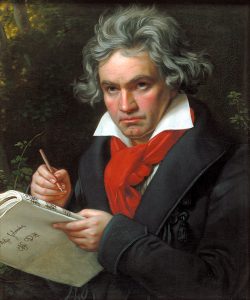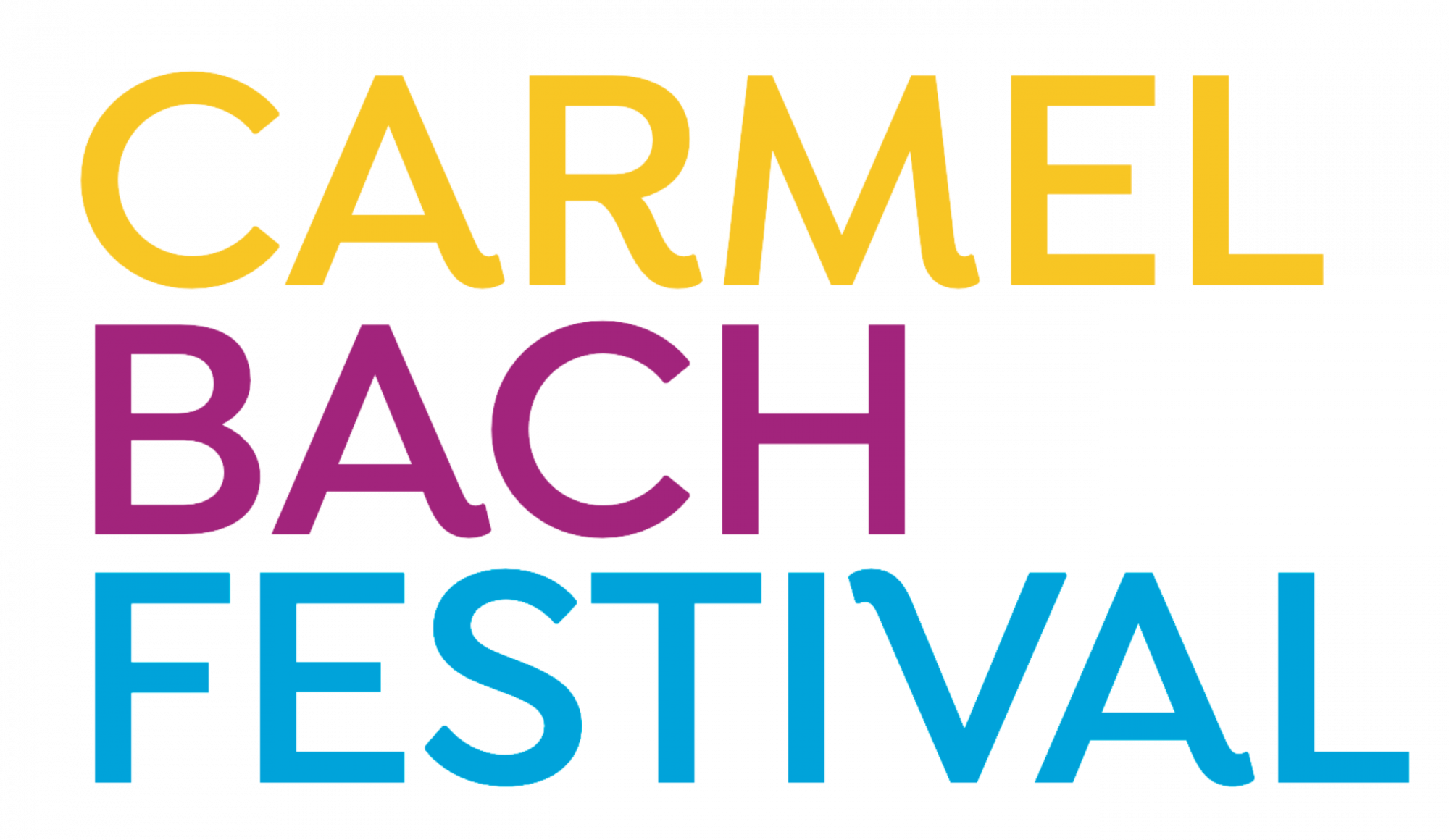Johann Sebastian Bach seldom set foot beyond Thuringia or Saxony and published little of the music he wrote. Yet he had a more profound influence on the composers who followed in his wake than any other composer in the history of western music. That influence proved particularly important for Ludwig van Beethoven, whose first exposure to Bach came at an early stage of his musical development. In our continuing exploration of “Bach and Beyond,” the Carmel Bach Festival focuses this season on the “Bach-Beethoven Connection” and the fruits of Beethoven’s encounter with the older master’s music.
 At the time of his death in 1750, Bach was famous among musicians and connoisseurs as a fabulous keyboard artist and composer of tremendous depth and intelligence. The wider public, however, preferred the works of more fashionable composers — Handel, Telemann, and Carl Philipp Emanuel Bach. This would soon change. Bach’s remains had hardly been laid to rest when a small army of devoted students (including his two oldest sons) began copying his keyboard works and handing them on to their own students, who, in turn, passed them on to theirs. Bach’s music and teachings radiated outward to other musical centers — first to Berlin, then Vienna, Zurich and Bonn, where twelve-year-old Beethoven mastered the preludes and fugues of The Well-Tempered Clavier long before they appeared in print. The first public mention of Beethoven links his name to Bach’s. A notice in the March 1782 issue of Magazin der Musik describes Beethoven as:
At the time of his death in 1750, Bach was famous among musicians and connoisseurs as a fabulous keyboard artist and composer of tremendous depth and intelligence. The wider public, however, preferred the works of more fashionable composers — Handel, Telemann, and Carl Philipp Emanuel Bach. This would soon change. Bach’s remains had hardly been laid to rest when a small army of devoted students (including his two oldest sons) began copying his keyboard works and handing them on to their own students, who, in turn, passed them on to theirs. Bach’s music and teachings radiated outward to other musical centers — first to Berlin, then Vienna, Zurich and Bonn, where twelve-year-old Beethoven mastered the preludes and fugues of The Well-Tempered Clavier long before they appeared in print. The first public mention of Beethoven links his name to Bach’s. A notice in the March 1782 issue of Magazin der Musik describes Beethoven as:
…a boy of eleven years and of most promising talent. He plays the clavier very skillfully and with power, reads at sight very well, and — to put it in a nutshell — he plays chiefly The Well-Tempered Clavier of Sebastian Bach, which Herr Neefe put into his hands. Whoever knows this collection of preludes and fugues in all the keys — which might almost be called the non plus ultra of our art — will know what this means.
Christian Gottiob Neefe, organist at the electoral court in Bonn, gave Beethoven his first lessons in composition and fired his young charge with his own enthusiasm for Bach. To appreciate the significance of his statement about young Beethoven, we need to realize that in 1782 the preludes and fugues of The Well-Tempered Clavier were considered very difficult fare. How amazing they must have sounded to a boy accustomed to the easy-listening galant music popular at the time! Thanks to Neefe, Bach’s musical logic and emotional depth left a lasting imprint on Beethoven. The Well-Tempered Clavier remained his Bible for the rest of his life.
 Soon after his move to Vienna in 1792, Beethoven was swept into the circle of Baroque enthusiasts who gathered every Sunday in the apartments of Baron Gottfried van Swieten to perform music by Bach and Handel. He lost little time responding to his host’s invitation to peruse his library of early music. He soon began to acquire manuscript copies of Bach’s music that came his way and eagerly snapped up published editions as they became available. His correspondence mentions several attempts to locate a copy of the B-Minor Mass, which remained unpublished during his lifetime. Before writing his Missa Solemnis he combed the library of Archduke Rudolph for music by Renaissance and Baroque composers, “among whom only Bach and Handel had real genius.” He once called Bach “the immortal god of harmony,” and in a diary entry written as his hearing continued its decline, reflected on the “portraits of Handel, Bach, Gluck, Mozart, and Haydn in my room — they can promote my capacity for endurance.”
Soon after his move to Vienna in 1792, Beethoven was swept into the circle of Baroque enthusiasts who gathered every Sunday in the apartments of Baron Gottfried van Swieten to perform music by Bach and Handel. He lost little time responding to his host’s invitation to peruse his library of early music. He soon began to acquire manuscript copies of Bach’s music that came his way and eagerly snapped up published editions as they became available. His correspondence mentions several attempts to locate a copy of the B-Minor Mass, which remained unpublished during his lifetime. Before writing his Missa Solemnis he combed the library of Archduke Rudolph for music by Renaissance and Baroque composers, “among whom only Bach and Handel had real genius.” He once called Bach “the immortal god of harmony,” and in a diary entry written as his hearing continued its decline, reflected on the “portraits of Handel, Bach, Gluck, Mozart, and Haydn in my room — they can promote my capacity for endurance.”
While there are numerous indications of Beethoven’s interest in Bach, his early- and middle-period works contain only occasional hints of Bach’s influence. Did playing Bach’s preludes and fugues at a tender age have any real effect on the music he composed? At this year’s Bach Festival we have an opportunity to hear two rarely performed works composed in Bonn before Beethoven turned twenty-one — Cantata on the Death of Emperor Joseph II (Saturday Opening Night Concert) and Music for a Knight’s Ballet (Tuesday Main Concert). Nothing in these or the three early Beethoven pieces in the Saturday Intermezzo Recital, sounds at all like Bach. But in a fallow period following the triumphs of his middle period, Beethoven paused to survey all he had achieved, felt some-thing lacking, and turned back to Bach, the supreme master of counterpoint and fugue, for guidance into unexplored continents of mind and spirit.
Despite differences in temperament, style, and the times they lived in, Bach and Beethoven pursued similar paths during the last decade of their lives. Each withdrew from the world of public performance and turned inward to reflect on his craft. Both men concentrated on the more esoteric aspects of fugal writing and made prominent use of fugues in their most ambitious works. For Beethoven, fugue became almost an obsession — after all, he had to play catch-up while Bach was perfecting the art he had excelled at all his life! One of Bach’s towering accomplishments at this time was The Art of The Fugue, a compendium of every conceivable fugal device. Beethoven, fully aware of Bach’s precedent, countered with his own Art of Fugue — the GroBe Fuge (Great Fugue), Op. 133. The pinnacle of Bach’s quest for musical perfection was the Mass in B Minor; possibly the last thing he composed. The grandeur of the B-Minor Mass inspired Beethoven’s Missa Solemnis, modeled on it in spirit if not in substance. Beethoven’s indebtedness to Bach may be heard Friday night in the Ninth Symphony’s finale, crowned with a double fugue proclaiming Schiller’s glorious vision of all men living in brotherhood. The Ninth Symphony, as complex and challenging as the late works of Bach, left the musical landscape forever changed. Through Beethoven, more than any other composer, Bach’s legacy was magnified and projected into the following two centuries. Thanks especially to the Bach-Beethoven connection, the powerful “brook” of Leipzig widened into a mighty river coursing on through the ages.
— Jean Widaman

